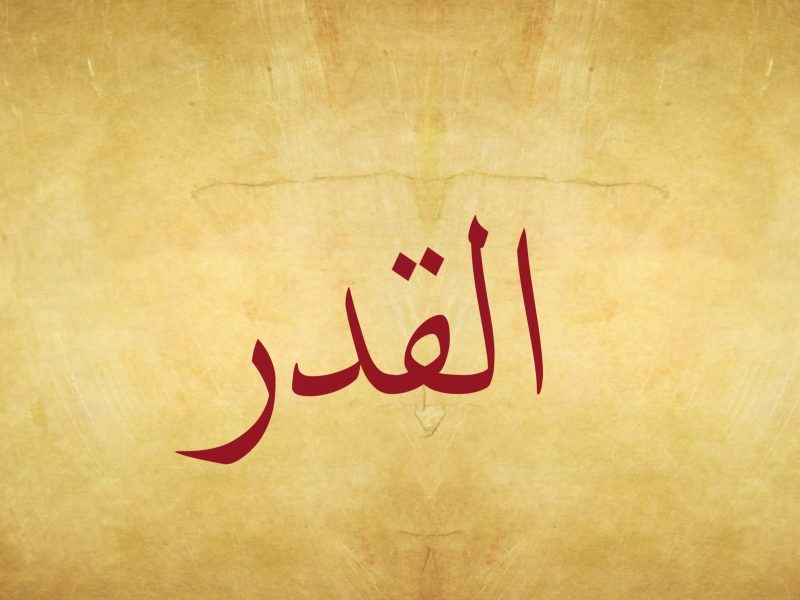Prophet Muhammad’s (PBUH) first wife Khadija bint Khuwaylid was a widow tradeswoman, who was 15 years elder than him. She proposed marriage to him via one of her relatives. She bore six children to Prophet Muhammad (PBUH) during their monogamous marriage which lasted 25 years until her decease. During this marriage, he was in Makkah and between the ages 25 and 50.
In Madina, Prophet Muhammad (PBUH) joined more than one woman in his wedding bond. Each of his marriages had a different cause. For example, young people like Aisha[1] learned the religion and taught people as his closest student. His marriage to Zaynab was God’s decree to reinforce that certain rulings about an adopted child are different from a biological child (Al-Ahzab 33:37). While his marriage to Juwayriyah bint Harith -the captivated daughter of the Chief of Banu Mustaliq Tribe- caused her entire tribe to become Muslim, it was also an example to show people how to marry a captive woman [2]. When his marriages are examined one by one, it turns out that each had a different reason.
“There is no doubt that the Prophet Muhammad (PBUH) had a special situation. The fact that he gathered nine women under a marriage towards the end of his life was interpreted by some researchers as a fondness for worldly pleasures, and some claims were made on the subject. He was indeed complying with the practices of many prophets before him and the traditions of his environment and the period he lived in. It is possible to summarize the reasons for the Prophet’s multiple marriages as follows:
- The first marriage of the Prophet was with a widow who was forty years old when she was twenty-five and had orphans. His relationship with Khadija lasted for twenty-five years, and he did not marry another woman in this fit period of his life. After living alone for a few years after her death, she married Sawda, a fifty-five-year-old widow. All of the women he married except for Aisha were widows. Having spent all his youth and maturity with a widow who is fifteen years older than him, it is not possible to say that the Prophet made his marriages to satisfy his human pleasures.
- When the verse that restricts the number of wives in polygamy to four women was revealed, Prophet Muhammad was married to nine wives, just like many other men in his society. According to the verse, those who were married to more than four wives had to choose four of them. Although it was possible for women who are separated from their husbands to marry other men, the Prophet’s wives were regarded as mothers of believers, so it was out of question for them to marry others if they divorced (al-Ahzab 33:53). For this reason, he was allowed to keep his wives in marriage, as permission specific to the Messenger of God.
- Undoubtedly, the new revelation brought by the last prophet concerned women as well as men. The wives of the Prophet were performing an educational and instructive task. The wives of the Messenger of God served as an authority of knowledge and fatwa, especially regarding the issues specific to women who avoided asking men. In this area, it is known that Aisha had a special place.. After the death of the Messenger of Allah, she became an authority that people of all ages, especially women, could easily apply. Some people from distant regions would also ask questions by writing to her. Hz. Job responded to these in writing.
- Apart from these general purposes and reasons, Prophet Muhammad also had specific reasons for marrying almost every one of his wives. Among these reasons were:
-Taking the wives of the Companions, who remained widowed and unsupported upon the death of their husbands and persevered in their devotion to Islam, under his protection and rewarding them (such as Sawda bint Zem’a, Zaynab bint Huzima, Hind bint Abu Umayya, Rayhana bint Zayd).
– Acting as a pioneer to change the misconceptions settled in Arab Society (for example Zaynab bint Jahsh upon the revelation of verses al-Ahzab 33:36-37).
– Establishing kinship with the notables of the Companions, rooted Arab tribes and neighboring communities (for example, Hafsa bint Umar b. Khattab, Umm Habibah bint Abu Sufyan, Safiyya bint Huyay)”.”[3]
For further details about polygamy please read:
https://www.islamandquran.org/research/polygamy-in-the-quran-and-in-the-modern-day.html
[1] For further details about Prophet Muhammad’s marriage with Aisha, please read:
https://www.islamandquran.org/fatwas/did-hz-aisha-marry-our-prophet-at-the-age-of-nine.html
[2] The Quran prohibits enslaving the war captives. According to verse 47:4, after the battle, they are set free either against ransom or as an act of grace. Prophet Muhammad (PBUH) had first emancipated Juwayriya and then married her.
[3] Translated into English from Diyanet İslam Ansiklopedisi, Art. Çok Evlilik -Kevser Kamil Ali – Salim Öğüt, v: 8, p. 368)








Add comment